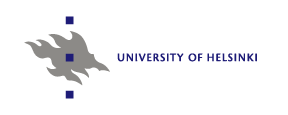- FIN-CLARIAH Research Infrastructure
A new national research infrastructure initiative FIN-CLARIAH for...
8.12.2021 8:12 by eahyvone - WarMemoirSampo published on December 3, 2021
A new “Sampo” application, “WarMemoirSampo”...
8.12.2021 8:04 by eahyvone - Five new SeCo papers accepted for the ISWC 2021
The 20th International Semantic Web Conference (ISWC 2021), the...
2.8.2021 6:53 by eahyvone
- Annastiina Ahola, Lilli Peura, Rafael Leal, Heikki Rantala and Eero Hyvönen: Using generative AI and LLMs to enrich art collection metadata for searching, browsing, and studying art history in Digital Humanities
- Eero Hyvönen, Petri Leskinen, Alexandre Lionnet, Blandine Blukacz-Louisfert, Pierre-Etienne Bourneuf, Davide Rodogno, Grégoire Mallard, and Florian Cafiero: Linked Open Data Approach to Study the Assembly Minutes of International Organizations and Their Underlying Prosopography in the Real World Context
- Eero Hyvönen, Petri Leskinen, Alexandre Lionnet, Blandine Blukacz-Louisfert, Pierre-Etienne Bourneuf, Davide Rodogno, Grégoire Mallard, and Florian Cafiero: A Linked Open Data Infrastructure for Studying Historical Activities of International Organizations: First Results on the League of Nations (1920-1946)
- Petri Leskinen, Eero Hyvönen, Alexandre Lionnet, Blandine Blukacz-Louisfert, Pierre-Etienne Bourneuf, Davide Rodogno, Grégoire Mallard, and Florian Cafiero: A Linked Open Data Service and Semantic Portal to Study the Assembly Minutes and Prosopography of the League of Nations (1920–1946)

Promoottori: Ontology-based image retrieval and browsing
"Promoottori" was a semantic search and browsing system based on RDF(S) ontologies for describing the events, persons, objects etc. related to the semantically rich traditional confernment ceremonies of the University of Helsinki. The (meta)data used was obtained from the collections of the Helsinki University Museum (the system is described in the publications below). The goal of creating this application was to publish and promote the rich cultural heritage related to the confernment sermonies of the University of Helsinki, formerly the Academy of Turku, established in 1640. The first confernment ceremony took place in 1643.
Released at the Helsinki University Museum in October 2003, this application is one of the first semantic web technology-based applications actually in use in the domain of Cultural Heritage. The work paved our way to developing the Sampo series of Linked Open Data services and semantic portals for Cultural Heritage and Digital Humanities during the next years and decades.Publications
The system is described in the following papers:


